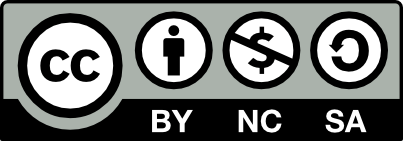Page Contents
Writing the Results
The Results section of a research article answers, “What did you find, and what patterns and trends did you observe?”
The three main components of the Results section that will help you answer these questions for your reader are 1) your tables and figures, 2) your description of your data, and 3) your identification of patterns and trends. In the Results section, writers communicate their findings with visual representations and accompanying written descriptions. The Results section of a research article is often short because this section has a visual focus.
Tables and Figures
Create visuals to show your results. You may not be able to include all the data that you generated for your study in your published article. Although you may choose to exclude some data, you should not exclude data that is directly relevant to your research question. For example, you cannot remove data that does not support your hypothesis, as doing so would misrepresent your findings. Instead, use relevance to your research question as your criteria for what information to include and what information to exclude.

Description of Your Data

Describe your data with reference to your tables and figures. A common approach is to make a statement about your data and refer to your table or figure in parentheses so that the reader can choose to observe the data themselves. When you’re describing your data, you do not need to provide a verbal transcript of every data point in your table or figure. Instead, use your description of your data to direct the reader’s eye to what’s important. An identification of patterns and trends, the third component, often follows immediately after the description of the data.
Identification of Patterns and Trends
Identify patterns and trends in your data and note similarities and differences that you observed. Assess your data by noting statistical significance. However, avoid “because” statements in this section – you will save these statements for the Discussion section.

Note: Sometimes Results sections will include adjustments and exclusions. You might include this subsection if you needed to exclude certain samples from your study or if some participants left your study halfway through. However, many researchers put adjustments and exclusions in the Methods section. If you have adjustments and exclusions, make sure to include them in either your Methods or Results, depending on what’s most common in your field or what makes the most sense for your study.
Three Key Components of the Results Section – An Example
NOTE: For educational purposes, we’ve created fictional excerpts that resemble passages from scientific research articles. The fictional examples are intended to illustrate writing techniques and are not designed to teach scientific content. Please note that the scientific content and data in this video is fictional.
To illustrate these key components, we’ll examine excerpts from a fictional scientific research article about varroa mites in honeybee colonies. This article examines which natural chemical treatment strategies are most effective for reducing the presence of varroa mites in honeybee colonies.
In the results section, the writer describes their data in words. For example, they note that “Sucrocide spray was the least effective treatment method for reducing the presence of varroa mites (Figure 1).”
This text provides the reader with specific information about this treatment method and its efficacy. The reference to Figure 1 is in parentheses so that the reader can opt to look at the figure to see the data for themselves. [Different examples of pie charts and bar graphs.]
The writer also includes figures to visually illustrate specific data.
In this varroa mite article, the writer has included Figure 1 as a bar graph called “Varroa Mite Reduction and Natural Chemical Treatments.” [A bar graph showing a rising trend.] This graph indicates the efficacy of each treatment type, providing the reader with a visual representation of data that illustrates comparisons and relationships.
Finally, the writer indicates what patterns and trends they’ve observed.
They note, “Of the natural chemical treatments tested, formic acid was the most effective treatment for reducing the presence of varroa mites. In colony 1, formic acid strips reduced the mite population by 62%. Similarly in colony 2, formic acid strips reduced the mite population by 60%.” Here, the writer directs the reader’s attention to an important similarity between two colonies.
By providing your results through three key components – data, figures and tables, and patterns and trends – you offer your reader multiple ways to engage with and understand the findings of your research.
Writing Tips
Below are four writing tips for your Results section:
Tip 1 – Choose Your Visuals Carefully
If you’re including a table or figure in your work, you must refer to that table or figure in your writing. If you’ve included a table or figure in your article and you don’t make reference to it in your writing, add a reference in, or consider whether you need that visual after all.
To decide whether to use a table or a figure, think about whether you want your reader to be able to see precise value or to be able to easily spot trends and relationships among variables. If precise values are important, use tables. If trends are important, use figures.
Both tables and figures are helpful for readers of research articles because they can examine these visuals at their own pace. However, if you’re giving a poster presentation, or completing your oral defense for your thesis with slides that show your results, figures are often the better choice because your audience won’t have time to carefully look through a table. With a figure, audiences can more easily spot the important patterns and trends in your data.
Tip 2 – Label Your Visuals Effectively
Label your tables and figures effectively so that readers can view them independently of your text. Sometimes, readers will look at tables and figures in an article to decide whether they want to read an article in full. Giving your tables and figures effective labels allows readers to investigate the visuals before reading the full text.
Many style guides have helpful guidelines for labelling, so take a look at a guide such as Scientific Style and Format: The CSE Manual for Authors, Editors, and Publishers or the Publication Manual of the American Psychological Association. These manuals include examples of well-labeled tables and figures.
Tip 3 – Avoid Repeating Your Methods
Only mention your methods – the steps that you undertook – when you are trying to situate the reader and help them understand the results that you are about to describe. It’s okay, for example, to mention a test that you performed at the beginning of a paragraph to situate the reader. Once you’ve done so, you’ll quickly want to move on to describing your results so that you can avoid repeating your methods.
Tip 4 – Repeat Sentence Patterns
In Results sections, you’ll often see sentence patterns. Using a consistent sentence structure can help readers recognize your results and follow your comparisons. In some ways, this advice goes against writing advice that you’ll often hear. We’re often told that we need to vary up our sentence structure and word choices to make our writing more interesting and engaging. Although variety can be a strength, when you’re writing a scientific research article, you don’t want to sacrifice precision for the sake of variety. Your ultimate goal as a scientific writer is for other scientists to understand your research. A consistent sentence structure can help to facilitate the transmission of ideas.
To see how this works, take a look at the following example sentences. Here’s a first draft:
Of the strategies used to reduce the presence of varroa mites, chemical treatments were the most effective. In colony 1, fluvalinate strips reduced the mite population by 62%. The use of amitraz strips led to an overall reduction of 60% of the overall varroa mite population in colony 2.
In this fictional example, the writer uses different sentence patterns to convey their results. For example, in the second sentence, they use “reduced” as a verb, and in the third sentence, they use “reduction” as a noun. (These words are highlighted below with bold font.) They also use different wording in the third sentence – they refer to “an overall reduction.” Now the reader might be wondering if reducing means something different than an overall reduction.
Of the strategies used to reduce the presence of varroa mites, chemical treatments were the most effective. In colony 1, fluvalinate strips reduced the mite population by 62%. The use of amitraz strips led to an overall reduction of 60% of the overall varroa mite population in colony 2.
The writer has also made the information difficult to follow by placing the colony number at the beginning of the second sentence and at the end of the third sentence. (These numbers are highlighted below with bold font.)
Of the strategies used to reduce the presence of varroa mites, chemical treatments were the most effective. In colony 1, fluvalinate strips reduced the mite population by 62%. The use of amitraz strips led to an overall reduction of 60% of the overall varroa mite population in colony 2.
A reader may initially think that both results apply to the first colony because they don’t see the reference to colony 2 until they reach the very end of this passage. Here, you can see that the writer made their results slightly harder to follow for the sake of sentence variety. Although these sentences give the reader the information they need, the reader has to do some work to follow them. As writers, we can make this work easier for the reader.
Let’s look at another version of the same information. Here, they write the following:
Of the strategies used to reduce the presence of varroa mites, chemical treatments were the most effective. Fluvalinate strips reduced the mite population in colony 1 by 62%. Similarly, amitraz strips reduced the mite population in colony 2 by 60%.
This second passage has a pattern – the writer states the chemical treatment and then uses the phrase “reduced the mite population in colony X by X percentage.” (This phrasing is highlighted below with bold font.)
Of the strategies used to reduce the presence of varroa mites, chemical treatments were the most effective. Fluvalinate strips reduced the mite population in colony 1 by 62%. Similarly, amitraz strips reduced the mite population in colony 2 by 60%.
The consistent wording here is easy for the reader to follow. The reader can focus on the information without getting distracted by the way that the writer has phrased the information.
Data Visualization
Creating effective tables and figures can help readers identify your findings and recognize why your research is important. Reach out to the library or the data resource centre at your university for support with creating effective visual content.
Conclusion
Now that you’ve identified the key components of the Results section and filled out the Results page of your research article map, you’re ready to start writing your Results.
A common challenge that new researchers often experience is differentiating between what should go in the Results section and what should go in the Discussion section. In the next section of this module, you’ll learn the key components of the Discussion section and strategies for communicating the meaning of your findings to your reader.

The content of this page was created by Dr. Jodie Salter and Dr. Sarah Gibbons.



